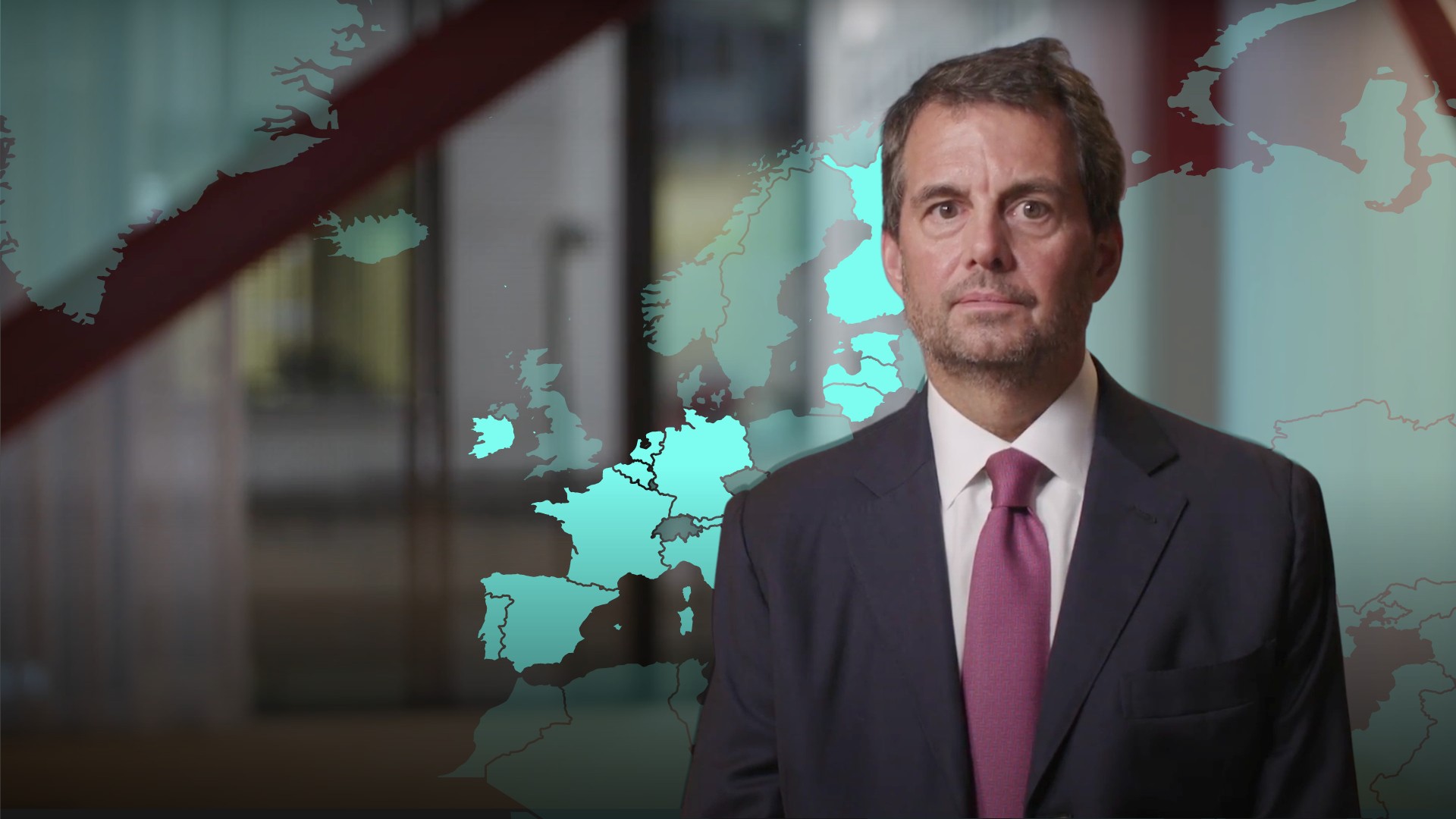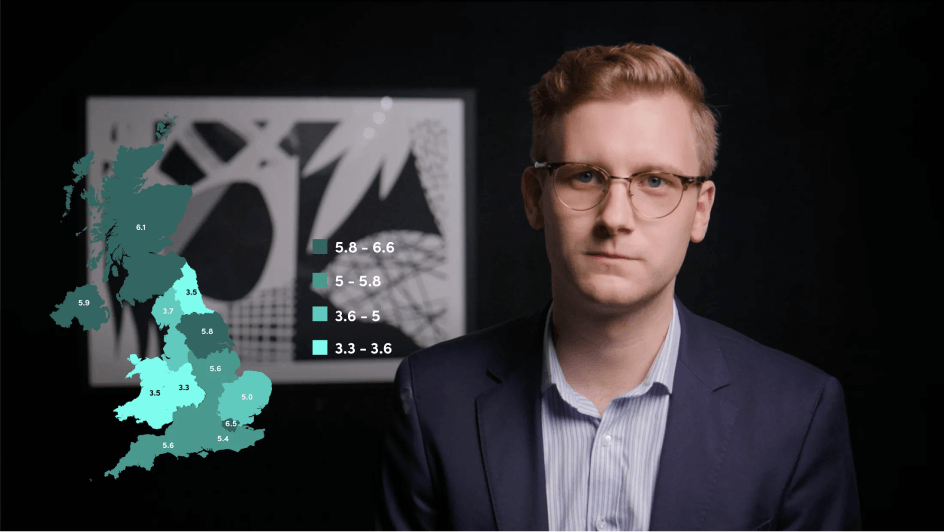
Quantitative Easing in the Eurozone

Tim Hall
30 years: Debt capital markets
In the last video of the series, Tim discusses the various policy actions of the European Central Bank since the Great Recession, and how these monetary policy initiatives have been used alongside various other projects supported by Eurozone member states, the European Union more broadly and the IMF.
In the last video of the series, Tim discusses the various policy actions of the European Central Bank since the Great Recession, and how these monetary policy initiatives have been used alongside various other projects supported by Eurozone member states, the European Union more broadly and the IMF.
Subscribe to watch
Access this and all of the content on our platform by signing up for a 7-day free trial.

Quantitative Easing in the Eurozone
19 mins 55 secs
Key learning objectives:
Identify the sovereign debt concerns in Europe
Outline the steps taken to address the crisis in the Eurozone
Understand how effective were the ECB's QE programmes
Overview:
After a series of accommodative monetary policy initiatives, including lower bank deposit rates, sterilised purchases of government bonds and collateralised lending to banks, the Eurozone managed to stabilise itself in 2012. The establishment of European supranationals like the EFSF played a critical role in this respect. However, the inflation levels during 2014 drove the ECB to embark on a QE programme - they were impactful, however, deflation and low growth have resurfaced.
Subscribe to watch
Access this and all of the content on our platform by signing up for a 7-day free trial.
What is the Eurozone?
- The Eurozone is a monetary union - not a fiscal union - currently involving 19 different European countries. Eurozone member states rely heavily on ECB policy initiatives to maintain the stability of the Euro and combat economic downturns
- ECB was established by the European Union in 1998
What were the sovereign debt concerns in Europe?
- The collateral effects of the great recession turned out to be very severe in Europe, especially as a risk-off environment increased scrutiny of risky assets held by banks, which eventually turned into concerns regarding Eurozone peripheral sovereign debt
- The weaker peripheral Eurozone sovereigns came into focus by late 2009 because of their large structural deficits and reliance on debt financing in the capital markets
- These sovereign debt concerns compounded the funding issues already present in the European banking sector, since many banks held large positions of peripheral Eurozone sovereign bonds, alongside other toxic assets in their portfolios
What steps did the ECB undertake to address the crisis in the Eurozone?
- The ECB embarked on a series of interest rate reductions to encourage lending and to address liquidity in the funding markets, lowering the rate on overnight deposit facilities from 3.5% in October 2008 to 0.25% by April 2009
- The ECB launched a programme in May 2010 in support of peripheral sovereigns and stressed banks known as “Securities Market Programme” (SMP). The SMP allowed the ECB to make discretionary purchases of Eurozone sovereign bonds in the secondary market
- In 2012, the SMP was replaced by the “Outright Monetary Transactions” programme (OMT) which continued to allow the ECB to engage in primary and secondary sovereign bond purchases but in coordination with provisions pursuant to the European Stability Mechanism
- The ECB adopted several rounds of longer-term secured financing programmes for banks at a very low interest rate. For example the “Longer-Term Refinancing Operations” (LTRO). These facilities were put in place in late 2011 and aggregated nearly €1 billion.
- The Asset-Backed and Covered Bond Purchase Programmes were introduced by the ECB during 2009-2014. These ensured that European Union banks had access to ample liquidity
In what other ways were Eurozone member states supported?
- The European Financial Stability Facility (EFSF) - This was set up in 2010 specifically to provide relief to stressed peripheral sovereigns and European banks. It provided assistance to Ireland, Portugal and Greece during the 2010-2012 period
- The European Stability Mechanism (ESM) established in late 2012, was an intergovernmental agency set up to support Eurozone member countries in distress and select banks facing funding issues. Its assistance was used in the case of Greece, Cyprus and Spain
- The ECB chairman’s statement that they would “do whatever it takes to preserve the Euro” seemed to settle the Eurozone sovereign markets and stabilised the euro
What was the key driver that led the ECB to introduce a QE programme?
Inflation continued to decline until prices actually fell in the 4th quarter of 2014, signalling a potential deflationary environment. This concerned the ECB since - as with Japan - deflation is very difficult to reverse once expectations have set in.
Therefore, in response to growing concerns, the member states of the Eurozone agreed to finally allow the ECB to embark on a QE programme in order to increase the money supply, stoke inflation and stimulate economic growth.
What was the first QE programme that was introduced by the ECB?
- This involved a €1.1 trillion 19-month Asset Purchase Programme, which was expanded and broadened, ultimately totalling €2.6 trillion over a three-year period
- Asset purchases included mainly government bonds, covered bonds, asset-backed securities and corporate bonds
As the first round of QE wasn’t as impactful as hoped, what was the response by the ECB?
- The ECB announced in late September that it would unleash a further set of monetary stimulus measures, including cutting the central bank deposit rate 10bps from -0.4% to -0.5%, providing some relief to banks in the form of a floor on deposits
- Starting a second round of QE - QE2 is slated to begin in November and will involve the purchase of up to €20 billion per month of government bonds
How effective were the ECB's QE programmes?
- The ECB had amassed a balance sheet of circa €4.7 billion at February 2019 - or 40% of the currency bloc’s GDP in 2018 and 20% of the EU’s GDP
- Inflation was 1% in September 2019, well short of the 2% ECB target
- Unemployment in the Eurozone was 7.5% in July 2019
- Hence the jury remains out on the Eurozone economy and the role and effectiveness of QE
Subscribe to watch
Access this and all of the content on our platform by signing up for a 7-day free trial.

Tim Hall
There are no available Videos from "Tim Hall"



























